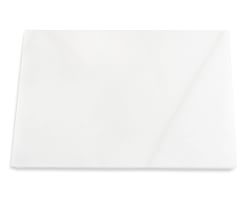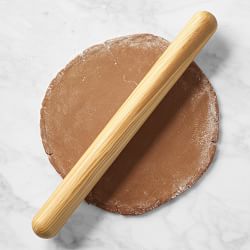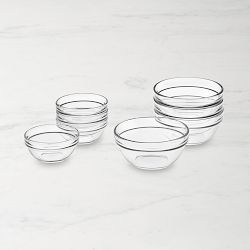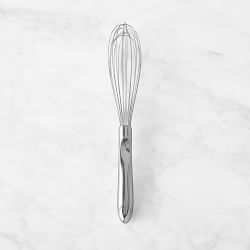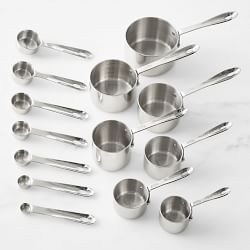Pear-Comté Tart
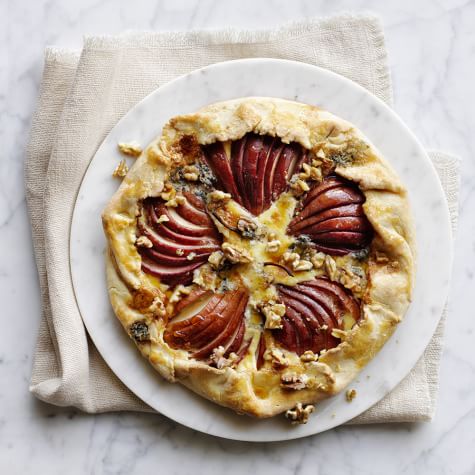
Fresh pears and cheese are a combination that only gets better when baked—heat deepens both of their flavors and binds them more closely to one another. Dorie Greenspan’s choice for this tart, which she serves as a starter at dinner or for lunch with a small salad, is a nutty cheese like Comté or Gruyère. If she can find older Comté or Gruyère, she grabs it—the cheeses get a little more assertive as they age, and she likes that. But younger cheeses, as well as sturdy American or English cheddars, make fine companions to the pears. (For a few other cheese-and-pear matches, take a look at Playing Around.) The tart is mild by nature, but you can build stronger flavors into it by coating the base with sharp mustard and/or dotting the surface with small chunks of the cheese. Scattering over chopped walnuts is also nice. The filling base is a custard from the quiche family.
Note: Dorie’s recipe uses a tart pan, but to make this dish into a freeform galette (as pictured), simply roll out the tart dough into a 12” round and assemble as instructed but leave a 1-inch border around the filling. Fold the dough up and pinch together at 2-inch intervals. Lightly beat 1 egg and brush the top of the dough with the egg. Bake the tart at 400° F (200° C) until the crust is golden, 30 to 35 minutes. Transfer the baking sheet to a wire rack and let the tart cool for 10 minutes before serving.
Ingredients
For the tart crust (or use store-bought pie dough):
- 1 1/4 cups (5 1/2 oz./170 g) all-purpose flour
- 1 tsp. sugar
- 1/2 tsp. fine sea salt
- 6 Tbs. (3/4 stick) (3 oz./85 g) very cold unsalted butter, cut into bits
- 1 egg
- 1 tsp. ice water
- About 2 Tbs. Dijon mustard, preferably French (optional)
For the filling:
- 2 eggs
- 2/3 cup (5 fl. oz./160 ml) heavy cream
- Fine sea salt and freshly ground pepper
- A little freshly grated nutmeg (optional)
- 3 oz. (85 g) Comté (or Gruyère or sharp cheddar), shredded (about 1 cup)
For the topping:
- 1 to 2 ripe, juicy pears
- 2 oz. (56 g) Comté (or Gruyère or sharp cheddar), cut into small cubes (about 1/2 cup; optional)
- 3 Tbs. walnut pieces or coarsely chopped walnuts (optional)
Directions
To make the tart crust, put the flour, sugar and salt in a food processor and pulse to blend. Scatter over the pieces of butter. You want to cut the butter into the dry ingredients until you’ve got some pieces the size of oatmeal flakes and others the size of peas. Work in long pulses—you might need as many as 20—and scrape the bowl often. Stir the egg and water together in a small bowl and add in 3 additions, pulsing after each. Then pulse until the dough just starts to come together, forms moist curds and clumps and holds together when pinched.
Turn the dough out onto a work surface, knead into a compact ball and flatten into a disk, then sandwich between sheets of parchment. Roll the dough into an 11-inch (28-cm) round. If it’s cold enough, fit it into a 9- to 9 1/2-inch (23- to 24-cm) fluted tart pan with a removable bottom or into a pie pan, prick the bottom with a fork and trim the top even with the pan’s rim. If it’s not cold, chill it until it’s workable and then proceed. Refrigerate the crust in the pan for at least 1 hour. (The crust can be refrigerated for up to 3 days or frozen for up to 3 months.)
Center a rack in the oven and preheat to 375°F (190°C).
Place the pan on a baking sheet, fit a piece of parchment or foil against the crust and fill with dried beans or rice.
To partially bake, bake the crust for 20 minutes, then carefully remove the paper or foil and weights and bake for another 4 minutes, until just firm; it shouldn’t take on much color. Transfer to a rack and let cool. Keep the oven set at 375°F (190°C).
Put the pan with the cooled tart shell on a baking sheet lined with parchment paper or a baking mat.
Lightly coat the bottom of the crust with the mustard, if you’re using it.
To make the filling, whisk the eggs and cream together in a bowl. Season lightly with salt and pretty generously with pepper. If you like nutmeg, add a few scrapings. Stir in the shredded cheese.
To assemble the tart, you can leave the skin on the pears—it browns nicely in the oven and looks pretty. Since pears can be all different sizes and weights, start with 1 pear. Cut it in half from top to bottom, remove the core and cut each half into 8 pieces.
Give the filling a last whisk and pour half of it into the tart shell. Arrange the pear slices in the crust—try to slant the slices skin side up. If you’re happy with how they fill the tart, you’re set; if you’d like more, slice into the second pear and add to the tart. Pour in the rest of the filling—you might not need it all. If you’re using them, scatter over the cubes of cheese.
If you want to add walnuts, after the tart has baked for 15 minutes, top with the nuts. Continue to bake the tart for another 10 to 15 minutes (total bake time is 25 to 30 minutes), or until the custard is puffed all the way to the center, golden brown and set. A tester inserted into the center should come out clean, and if you tap the pan, the custard shouldn’t jiggle. Transfer the tart to a rack and wait for 5 minutes before removing the tart ring.
You can serve the tart hot, warm or at room temperature. It’s even tasty (but not as elegant) chilled.
Storing: Like most tarts, this one’s best soon after it’s made. If you have any left over, cover and refrigerate for up to 1 day.
Playing Around
Muenster-Pear Tart: Try the tart with a true Alsatian Muenster, cutting the cheese into cubes (avoid the rind) rather than shredding it. Omit the nutmeg and swap the walnuts for cumin seeds. Just don’t overdo it—cumin is powerful, and a few seeds go a long way.
Chèvre-Pear Tart: Instead of the shredded cheese, use cubes of creamy chèvre (cubing chèvre is easiest if you start with a log of cold cheese). Omit the nutmeg, and don’t brush the crust with mustard. If you’d like, sprinkle the pears with some fresh thyme leaves. And do use the walnuts, so good with goat cheese.
Blue Cheese–Pear Tart: Pears are often paired with soft blue cheeses like Gorgonzola dolce and Fourme d’Ambert, and just as often with firmer, sharper and saltier blues, like Roquefort or Stilton. Find a blue that you like and cut it into small cubes. Omit the mustard and nutmeg but include the walnuts—they’re good with blue cheeses. If you’d like, add a tablespoon of honey to the custard or drizzle a little honey over the bottom of the crust before you pour the custard into it. Honey is particularly good with strong, crumbly blues.
Adapted from Baking with Dorie by Dorie Greenspan (Mariner Books, 2021)

